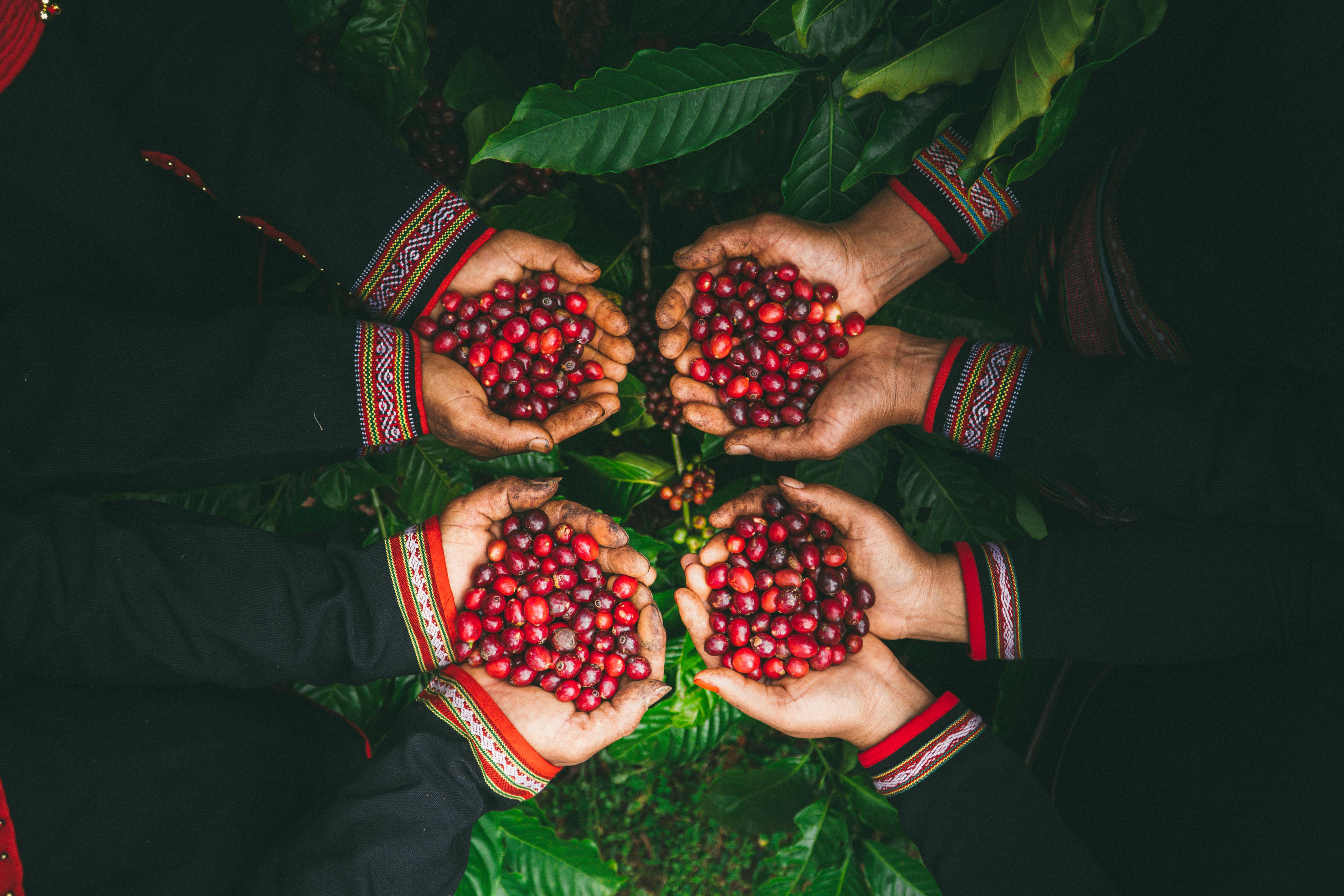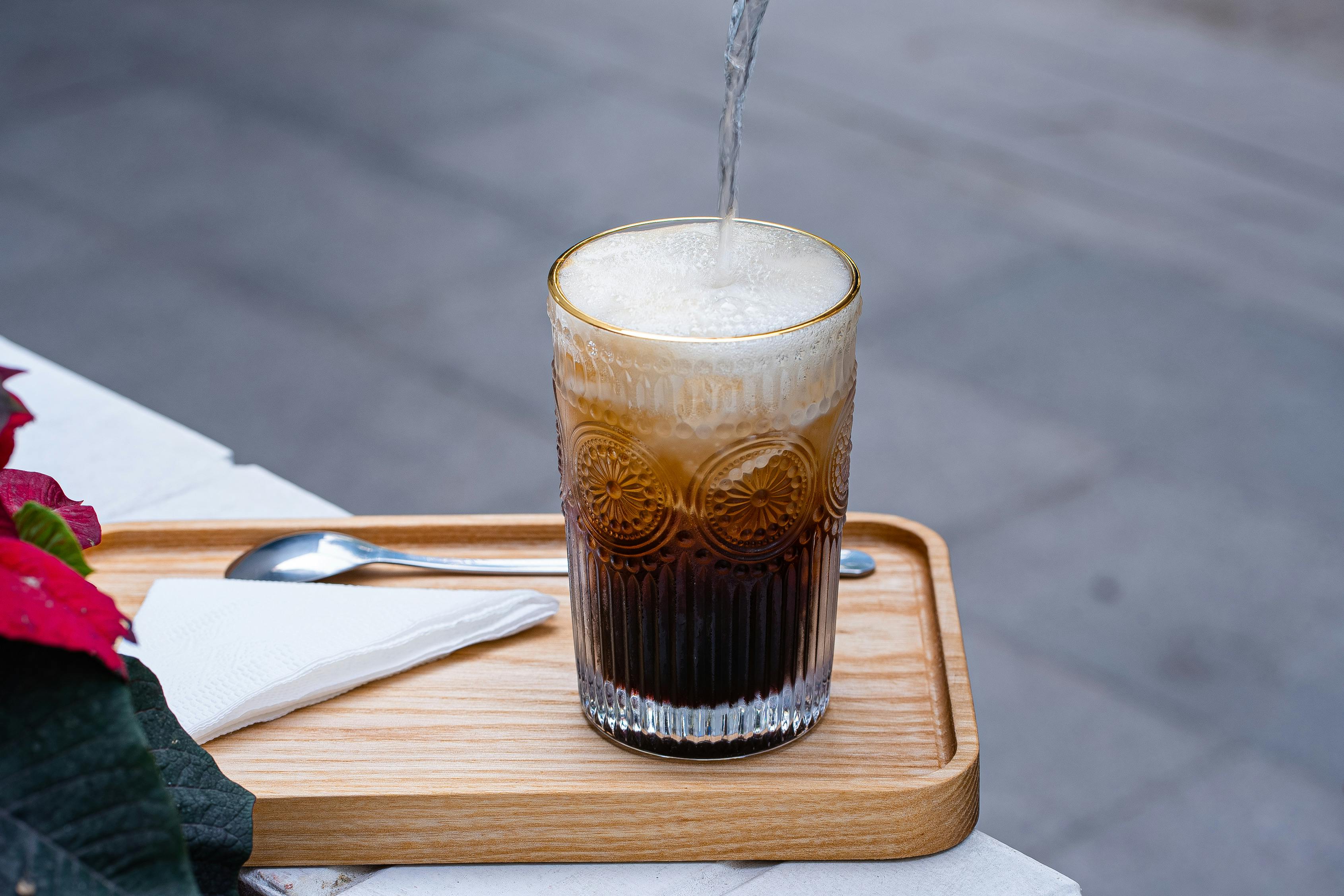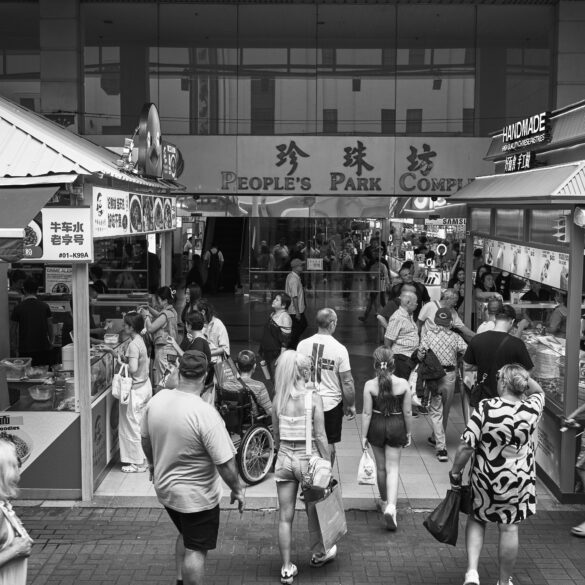Vietnam Specialty Coffee Techniques Driving Global Beverage Growth
Let me start with a question: Did you know Vietnam produces about 16% of the world’s coffee—but only recently began earning global admiration for its specialty production techniques? Honestly, I’ve spent years in coffee trade circles and still, the pace of Vietnamese innovation surprises me. While many outsiders still associate Vietnamese coffee with mass-market robusta, in 2025, the narrative has shifted dramatically. This is what I call the “Vietnamese Specialty Coffee Renaissance”—a movement fueled by bold techniques that blend heritage with cutting-edge science and entrepreneurial agility.
If you’re a beverage industry insider, coffee aficionado, entrepreneur, or just someone searching for real flavor, this piece is meticulously tailored for your curiosity and professional ambition. We’ll break down not just what Vietnam is doing, but how its deep agricultural skill, ingenuity, and global strategic connections now shape the specialty coffee business far beyond Asia. For context, I still recall standing on a foggy hillside in Lam Dong province, sipping an anaerobically fermented arabica so vividly complex I had to re-examine everything I thought I knew about Vietnamese coffee. “Back in the day,” as my old mentor used to say, “Vietnamese coffee was all about scale.” Not anymore.
Vietnam’s Global Coffee Evolution: Key Shifts
Here’s what strikes me—the truly transformational change in Vietnam’s coffee scene didn’t happen overnight. Sure, the country’s ascent as a global robusta powerhouse is a decades-old story, with post-war agricultural reform fueling production at staggering scale1. But the specialty coffee revolution? That’s pretty recent and seriously fascinating. Up until 2014, specialty arabica and high-value robusta were niche projects—almost “side hustles” for adventurous farmers in Da Lat and Gia Lai. Now, it’s headline news from New York to Tokyo.
Why did this shift happen? A couple things:
- Global buyers began demanding transparency and traceability—a direct response to both consumer pressure and market opportunity2.
- Young Vietnamese farmers, often university-educated, returned to family farms with zero intention of sticking to status quo methods.
- International specialty coffee “waves” (think SCA, WBC influence) brought new standards and connections—a genuine knowledge transfer that transformed local perspectives3.
A quick reality check – I’m still learning about these transitions myself, and the velocity of change means everyone in coffee has had to rethink former biases. When I first began sourcing coffees from Vietnam in 2018, not a single international buyer talked about “fermentation profiles.” Nowadays? I’ve seen business buyers from Germany, Australia, and even Honduras chasing down Vietnamese fermentation expertise for their own product lines.
Specialty Processing Techniques: Changing the Game
Let me clarify: Vietnam’s specialty coffee producers haven’t just changed their growing practices—they’ve re-engineered post-harvest processing in ways that literally redefine global beverage quality. In my direct experience touring processing stations near Bao Loc, I witnessed at least three game-changing methods emerging side by side:
- Honey and Natural Processing with Local Yeast Cultures
- Anaerobic and Carbonic Maceration Fermentation
- Hybrid “Vietnamese Champagne Process” Utilizing Fruit Additions
Don’t just take my word for it. The specialty coffee world is abuzz about “Vietnamese Anaerobic Robustas”—scoring above 85 on the SCA scale and popping up in competition settings as signature drinks4.
What really excites me is watching classic robusta—once written off by global experts—being elevated to specialty markets through fermentative breakthroughs and careful drying, even under unpredictable monsoon humidity. And yes, this means Vietnamese farmers and processors often have to fight against challenging climatic disruptions while keeping flavor consistency high.
“In Vietnam, coffee is both science and soul. Our specialty producers aren’t just chasing flavor scores—they’re making every stage of production a story worth telling.”
Processing is a fast-evolving art in Vietnam, powered by technical learning and generational memory. And, if I’m being honest, climate and humidity still trip up even the top experts—nobody here pretends it’s “solved.” So, what will it mean for the beverage market worldwide?
Farmer Innovation Meets Global Beverage Business
This is where things get personal. Last month, during my annual supplier review in Da Lat, I witnessed a direct negotiation between a mid-sized Vietnamese processor and a Scandinavian beverage chain—both parties elbow-deep in ferment samples, recipe sheets, and geolocation data points. “We don’t just sell beans,” the farmer told me, “we co-create beverage concepts.” That’s not hyperbole. Nearly half the Vietnamese specialty coffee contracts I’ve seen in 2024 feature product co-development, blending Vietnamese tradition with global branding needs5.
From my perspective, this “co-innovation model” is why Vietnam specialty coffee now powers beverage business growth far beyond Asia:
- Vietnamese farmers regularly conduct experimental batches—often 10+ fermentation styles per season. These aren’t lab-only—they’re market-driven.
- Global beverage chains, ranging from boutique cafes in Berlin to RTD startups in Seoul, seek out Vietnamese specialty lots as foundational flavor components6.
- Young Vietnamese professionals—some with backgrounds in biotech, food science, and international business—are bridging old “farm to port” gaps with vertically integrated brands7.
Let’s step back. Traditionally, Vietnamese coffee relied on scale, speed, and price. But now? The value proposition pivots on processing transparency, flavor storytelling, and cultural authenticity. That’s a sea change with a direct business impact. During my early career, I made the mistake of ignoring direct farmer insight in marketing meetings—now I’m far more careful to center local narratives.
Spotlight: Collaborative Specialty Development—Real Examples
I’m partial to collaborative case studies because they bridge theory and reality. In 2023, K’Ho Coffee, a cooperative in Lam Dong, worked with a Japanese cold brew chain to develop a “Vietnamese Blueberry Champagne” arabica using local fruit adjuncts and pressure-sealed fermentation—a beverage blend now listed in over 120 stores across East Asia8. These projects aren’t isolated. In the same year, I watched a Q Grader-led session pivot towards robusta-based “espresso martini” profiles for boutique hotels in London. This signal is crystal clear: Vietnam’s specialty innovation is powering entirely new beverage product categories.
Now, moving on—how are these specialty techniques driving business value in international markets?
International Market Expansion & Brand Impact
Honestly, I reckon this is where Vietnamese specialty coffee crosses from local legend to global juggernaut. International beverage businesses now view Vietnamese specialty origins as both “flavor driver” and “brand signature.” Why? Three reasons stand out from my sourcing and consulting work:
- Unique Sensory Profiles: Anaerobic robustas offer chocolatey, berry-sweet complexity, opening new beverage possibilities9.
- Scalable Traceability: Cloud-based tracking and farm-to-cup mapping allow beverage chains to showcase direct trade—building consumer trust.
- Adaptable Product Development: Vietnamese specialties integrate seamlessly into both hot and cold drink formats, from trending nitro brews to signature cocktails.
Take Starbucks’ 2023 global reserve launch—five out of twelve new reserve blends included Vietnamese specialty robusta and arabica micro-lots. This was a tangible, public validation of Vietnam’s specialty status10.
Quick Reference Table: Vietnamese Specialty vs. Conventional Coffee Production
| Aspect | Specialty Techniques (Vietnam) | Conventional (Legacy) | Global Business Impact |
|---|---|---|---|
| Processing | Honey, Natural, Anaerobic, Fruit-Adjunct Fermentation | Washed, Wet, Basic Drying | Flavor complexity, market access |
| Traceability | Digital Farm-to-Cup, QR Code, Live Lot Mapping | Basic origin data, anonymous lots | Consumer trust, premium branding |
| Product Integration | Custom beverage blending, co-creation, cold brew & RTD | Bulk wholesale, commodity scaling | New beverage formats, higher margins |
Sound familiar? This table reflects reality—not just hopeful marketing.
I’ll be completely honest: Vietnam is still competing in markets that historically discounted robusta and lesser-known arabica lots. So the quest for global respect isn’t finished. But recent specialty scoring results—including multiple lots above 87 in the Cup of Excellence—signal a real shift.
“The challenge for Vietnam is not just producing specialty coffee, but communicating its story and unique flavor journey to a skeptical global audience.”
Let that sink in for a moment. It’s not just production—it’s also about narrative, authenticity, and connection. If you ask me, Vietnamese specialty innovation stands at the crossroads of agricultural skill and global beverage branding. That’s what empowers growth.

Sustainability, Technology, and The Future
Let’s think about sustainability for a second. In my experience, the defining edge for Vietnam’s specialty coffee isn’t just flavor—it’s the strategic embrace of eco-practices and tech adaptation. Three years ago, before the global beverage industry’s sustainability awakening, Vietnamese growers in my network were already experimenting with shade-grown arabica, regenerative soil care, and water-saving fermentation techniques12. That’s “ahead of the curve,” and it matters more as climate risk accelerates.
- Leading cooperatives employ biogas systems to reduce post-harvest waste and generate energy for processing stations.
- Cloud-based agricultural management lets growers track inputs, set sustainability goals, and document carbon reductions.
- Farmers increasingly diversify polyculture (coffee grown with macadamia, pepper, and local fruits) to protect soil and income against weather volatility13.
On second thought, it’s easy to get swept up in “success stories,” but real challenges persist. Climate change brings unpredictable rainfall—witnessed firsthand as downpours wiped out flowering in several altitudes last season. Additionally, global beverage buyers pressure Vietnamese producers for ever-more certifications—from Fair Trade to Rainforest Alliance. Some see this as legitimate; others, as just box-ticking.
Going deeper, I’ve watched specialty cooperatives struggle with tech implementation. The promise of “blockchain traceability” is real, but digital access gaps and cost constraints mean only 20% of specialty farmers currently use real-time mapping14. Industry analysts anticipate exponential growth here, but progress is uneven. Meanwhile, direct-to-consumer ecommerce remains challenging due to logistics and payment system friction.
Expert Voices: Balancing Progress with Preservation
“We adapt new technology every year, but the heartbeat of Vietnamese coffee is still our community, our stories. Innovation must support—not replace—who we are.”
Can Vietnam’s specialty coffee sector maintain this hard-won balance? For me, the verdict is still out. Advances in green processing methods and traceability promise further quality breakthroughs. But it’s cultural preservation and community enterprise—those “softer” elements—that anchor true sustainability.
Here’s a quick situational analysis table:
| Trend/Challenge | Current Status (2025) | Business Impact | Opportunity/Threat |
|---|---|---|---|
| Climate disruption | Volatile rainfall, shifting flowering periods | Quality risk, volume instability | Resilience incentives, crop diversification |
| Tech adoption | Partial (blockchain, mapping, mobile ag tools) | Traceability, data-driven branding | Growth in premium segments |
| Certification pressure | High, mixed impact | Market access, compliance cost | Potential exclusion of smallholders |
| Community engagement | Rising (co-ops, direct-trade models) | Strengthens quality, local resilience | Unlocks authentic differentiation |
Okay, let’s step back and look at the broader business canvas. Vietnam’s specialty coffee sector is powering intense product innovation across RTD (ready-to-drink) beverages, bespoke cold brews, flavored nitro, and even “coffee craft cocktails” featured on international beverage lists. Beverage businesses can now invest in “Vietnam-origin” signatures—backed by deep stories and traceable farm partnerships15.
Case Study: The Lam Dong Blue Mountain Blend
I was lucky enough to taste-test this blend in late 2024, a joint project between a Vietnamese specialty co-op and a Singapore beverage innovation lab. Using high-altitude arabica, bluefruit adjuncts, and multi-stage fermentation, the result was an RTD beverage with a vibrant, berry-acid backbone—now distributed across six countries. The business outcome? 38% higher margins at launch and rapid consumer traction, confirming that Vietnamese specialty techniques aren’t just “fashionable”—they’re financially viable when backed by global branding and local expertise.
What gets me about Vietnam’s specialty coffee sector is the honest recognition that “best practice” never means “finished.” Every producer I interviewed sees specialty techniques as a work-in-progress—a living business advantage built on learning, iteration, and genuine partnership.
Professional Call-to-Action: Engage with Vietnamese Specialty Coffee
Conclusion: Vietnam’s Role in Shaping Global Beverage Business
As someone who’s spent the past decade in coffee sourcing, I find Vietnam’s specialty sector to be a genuine game-changer. In 2025, what really excites me is the dynamic interplay of agricultural tradition, scientific processing, technology, and global partnership. Yes, challenges persist—climate, certification, digital access—but the unrelenting innovation among Vietnamese producers makes this a story to watch for years to come.
If you’re in the beverage industry, consider Vietnam not just a “source,” but a creative partner in flavor development, brand building, and sustainable innovation. The next wave of beverage growth—from RTD cold brew to signature cocktails—is likely powered by Vietnamese specialty techniques still unfolding. Better yet, this sector’s capacity for co-creation means independent cafes, global beverage chains, and smallholder cooperatives alike stand to benefit.
“Vietnam’s specialty coffee is no longer an emerging trend—it’s an essential building block for global beverage business innovation. The journey is just beginning.”
Thanks for reading—and join me in watching, tasting, and co-creating the next chapter of Vietnamese specialty coffee-driven beverage innovation. Your participation helps fuel a business revolution rooted in authenticity, partnership, and ongoing discovery.
Sources & References
Validated References


